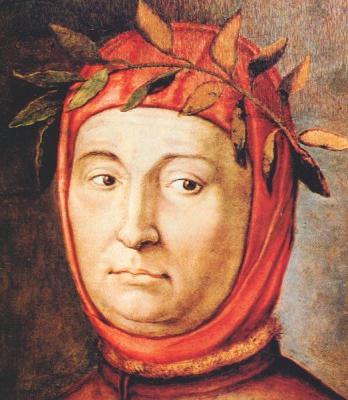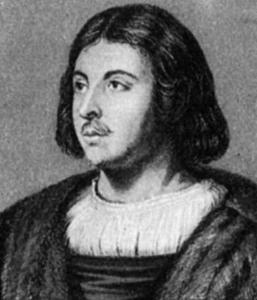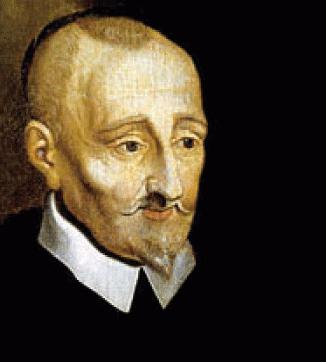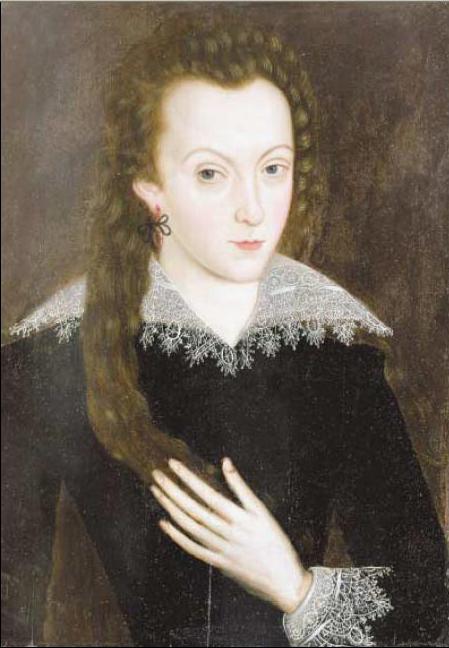What is sonnet? Poem-sonnet. Authors Santians
The favorite of poets and fans of poetry, sonnet leads his pedigree from the writings of Provencal Trubadurov, who created a secular lyrics and first began to lay down songs in the national language, and not in Latin. The name of the genre goes back to Provencal Word Sonet - a ringing, sonorous song.
What is sonnet? History of origin
(1209-1229), which swept the south of France, forced many troubadurov to move to Sicily, where in the 1200s in Naples, at the courtyard of the patron and verse of Friedrich second, the school of poetry was formed. Its representatives contributed to the transformation of the sonnet - it was already called Sonetto - in the lead genre of his creativity. Sicilian poets used the Tuscan dialect, which already at the turn of the 13-14 centuries, the basis of the Italian literary language. Many geniuses of Renaissance wrote sonnets: Petrarch, Dante, Boccaccio, Pierre de Ronsar, Lope de Vega, Shakespeare ... And each of them brought something new to the content of poems.
Features of form
Classic sonnet consists of fourteen stanza. In the era of the Italian and French Renaissance, the poets wrote poems in the form of two katrenins (quadruple) and two tercin (three-hundred), and in the period of English - three katrenins and one two hundred.
The poem-sonnet is incredibly musical, which is why it is easy for him to make music. A certain rhythm was achieved through the alternation of the male and female rhyme, when the emphasis falls on the last and, accordingly, for the penultimate syllables. The researchers revealed that a classic sonnet contains 154 syllables, but not all poets observed this tradition. Italy, France and England - three cradle development of this poetic form. The authors of the sonnets - immigrants from each country - contributed some changes in the form and composition.

Wreath of sonnets
This special form of the poem arose in Italy in the 13th century. It has 15 sonnets, and the main theme and the idea of \u200b\u200bthe other fourteen are in the latter. For this reason, the authors began to work from the end. In the fifteenth sonnet, the two first stanches are important, and according to tradition, the first sonnet must certainly begin the first string of the latter and end the second. No less interesting and other parts of the wreath poem. In the remaining thirteen sonnets, the last line of the previous one must be the first string of the subsequent.
From Russian poets in the history of world literature, the names and Valery Brysov were remembered. They perfectly knew what a sonnet was, so they were interested in the wreath of sonnets. In Russia, such a form of writing originated in the 18th century. The genius Valery Bryusov was a master of this genre and strictly observed the established foundations. Its last poem from a wreath of sonnets ("fatal row") begins rows:
"Fourteen called I needed
Names of loved ones, memorable, alive! "
In order for the composition of the genre is more understandable, it is necessary to carry out a small analysis. By tradition, the final stanza begins the first sonnet, and ends - the second; The third sonnet begins the last line of the previous one, in this case - "names of loved ones, memorable, alive!" It can be argued that Valery Bryusov has reached perfection in this genre. Today, literary crowns counted 150 woken of sonnets of Russian poets, and in world poetry there are about 600.
Francesco Petrarch (1304-1374). Italian revival

He was called the first man of Renaissance and the founder of classical philology. Francesco Petrarch received a lawyer's education, became a priest, but he lived not according to the principle of theocentrism. Petraka traveled the whole of Europe, while in the service of Cardinal, began his literary activities in the village of Voklum in the south of France. All his life he interpreted the ancient manuscripts and preferred antique classics - versgil and cicero. Many of their poems, including sonnets, Petracka placed in the collection "Kanzonier", which in the literal translation means "Book of Songs". In 1341, he was crowned with a laurel crown for literary merit.
Features of creativity
The main feature of Petrarks is to love and be loved, however, this love should relate not only to a woman, but also to friends, native, nature. This idea he reflected in his work. His book "Kanzonier" is related to the Muse. Laura de New, Knight's daughter. The collection was written almost all life and had two editions. Sonnets wear the name "on the life of Laura", the second - "on the death of Laura". Total in the collection - 366 poems. In 317 Sights of Petrarch, the temporal dynamics of feelings can be traced. In the "Kanjonier" the author sees the task of poetry in the chanting of beautiful and cruel Madonna. He idealizes the laur, but it does not lose their real characteristics. The lyrical hero is experiencing all adversity and it suffers that he has to violate the sacred vow. The most famous Sonnet of the author - 61, in which he is glad of every minute spent with his beloved:
"Blessed day, month, summer, hour
And a moment, when my eyes are the eyes met! "
A collection of Petrarks is a poetic confession in which he expresses his internal freedom and mental independence. He is experiencing, but does not regret love. He seems to be justified and glorifies the earthly passion, because humanity cannot exist without love. Stee-sonnet reflects this idea, and the poets of a later time continue to support it.
Giovanni Boccaccio (1313-1375). Italian revival

The great writer Renaissance (most famous for its work "Decameron") was an illegitive child, so initially it was treated with contempt, but the talent was overwhelmed, and the young poet received recognition. The death of Petrarki was so touched Bokcchcho that he wrote in his honor Sonet, in which he revealed the thought of the struck of earthly life.
"To Sennuchcho, he joined him
And to Dante you and before you
Then hidden from us appeared visibly. "
Giovanni Bokcchcho dedicated sonnets Dante Aligiery and other geniuses, and most importantly - women. He called his beloved by one name - Fiametta, but his love is not so elevated, like Petrarki, but more landed. He slightly changes the Sonet genre and chasing the beauty of the face, hair, cheeks, lips, writes about his attachment to the beauty and describes the Plut and Pet of Women expected a harsh fate: disappointed in the nature of excellent creatures and the victims of a betrayal, Bokcchcho in 1362 received a spiritual san.
Pierre de Ronsar (1524-1585). French revival

Born in the family of wealthy and noble parents, Pierre de Ronsar had all the possibilities for good education. In 1542, he presented a meager French poetry new poetic sizes and rhymes, for which he was deservedly called the "king of poets." Alas, for his progress he was cruelly paid and lost his hearing, but he did not leave the thirst for self-improvement. In advance antique poets, he considered Horace and Vergil. focused on the work of his predecessors: he knew what a sonnet was, and described the beauty of women, his love for them. The poet had three muses: Cassandra, Marie and Elena. In one of the sonnets, he admits in love for a kind of dark-haired and gloomy Virgin and assures her that neither red-haired nor Svetolyoky will never cause light feelings in it:
"I am brown eyes with alive fire with fervor,
I do not see gray eyes ... "
William Shakespeare (1564-1616). English revival

In addition to the magnificent comedies and tragedies listed in the treasury of world literature, Shakespeare wrote 154 sonnets, which are of particular interest for modern literary criticism. He said about his works that "this key he opened his heart." In some sonnets, the writer shared his mental experiences, and in others it was restrained, dramatic. Shakespeare dedicated fourteenthist poems to his friend and dark lady. Each sonnet is characteristic of the number, so it is not difficult to identify the graduation of the author's feelings: if in the first works the lyrical hero admires beauty, then after 17 sonnets come for plenty of reciprocity. In poems at number 27-28, this feeling is no longer joy, but puzzling.
Shakespeare's sonnets were written not only for love topics: Sometimes the author acts as a philosopher dreamed of immortality, and condemns the vices. Nevertheless, a woman for him is a perfect being, and he confidently claims that the beauty is destined to save the world. In the famous sonnet, 130 Shakespeare admires the earthly beauty of his beloved: her eyes are not compared with the stars, the complexion is far from the shade of tender roses, but in the last two-beznes, he assures:
"And all that she will give way to those who hardly
Who in comparisons made of lush rolled out. "
Italian, French and British sonnets: similarities and differences
Renaissance presented with humanity many masterpieces of literature. Beginning in Italy in the thirteenth century, a little later, the era moved to France, and two centuries in England. Each writer, being an outcomes from a country, brought some changes in the form of sonnet, but the most relevant topics remained unchanged - the charm of the beauty of a woman and love for her.

In the classic Italian sonnet, the swores were written on two rhymes, the tercets were allowed to write both for two and three, and the alternations of men and female rhymes were optional. In other words, the emphasis in stubborn could fall both on the last and the penultimate syllable.
In France, a ban on the repetition of words and the use of inaccurate rhyme was introduced. Rocks from tercets strictly separated from each other syntactically. The poets of the Renaissance from France wrote sonnets with a ten-satellite.
In England, an innovation was introduced. The poets knew what a sonnet was, but instead of his usual form, consisting of two katrenins and two tercets, there were three cores and one two-weeks. Final stanzas were considered key and carried an expressive aphoristic center. The table demonstrates the normalized rhyme options in different countries.
Sonyet today
The fourteenthist sophisticated original shape of the verse has successfully evolved into the work of modern writers. In the twentieth century, the French model was the most common. After Samuel Yakovlevich Marshak brilliantly translated Shakespeare's sonnets, the authors interested in the English form. The latter is in demand even now. Despite the fact that all sonnets were transferred to the outstanding geniuses of literature, interest in this genre remains relevant so far: in 2009, Alexander Sharakshane released a collection with translations of all Slekespeare's sonnets.









